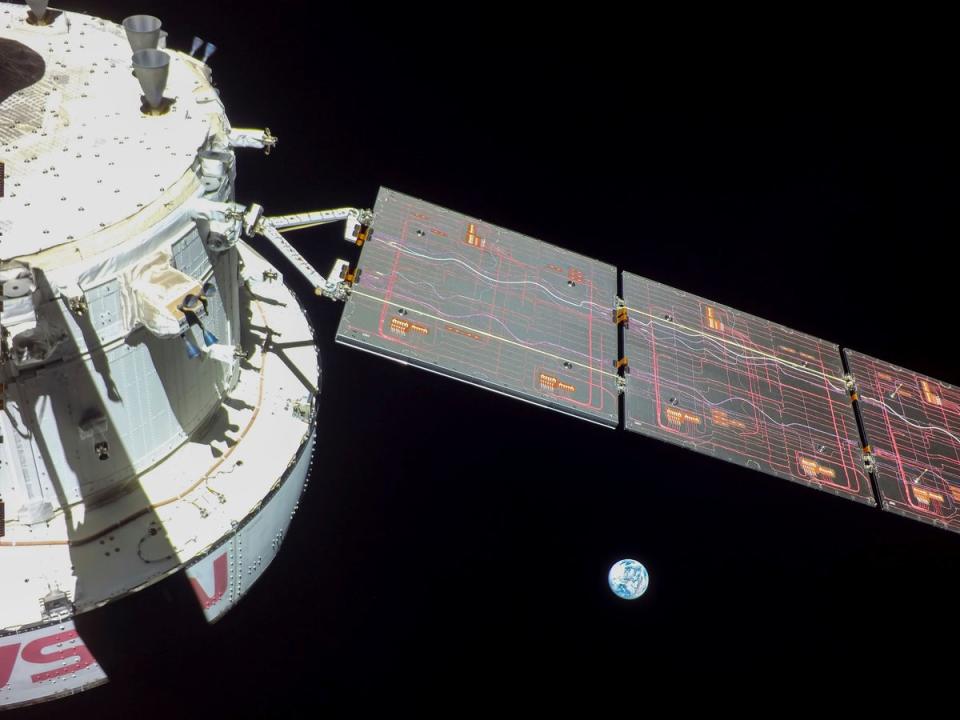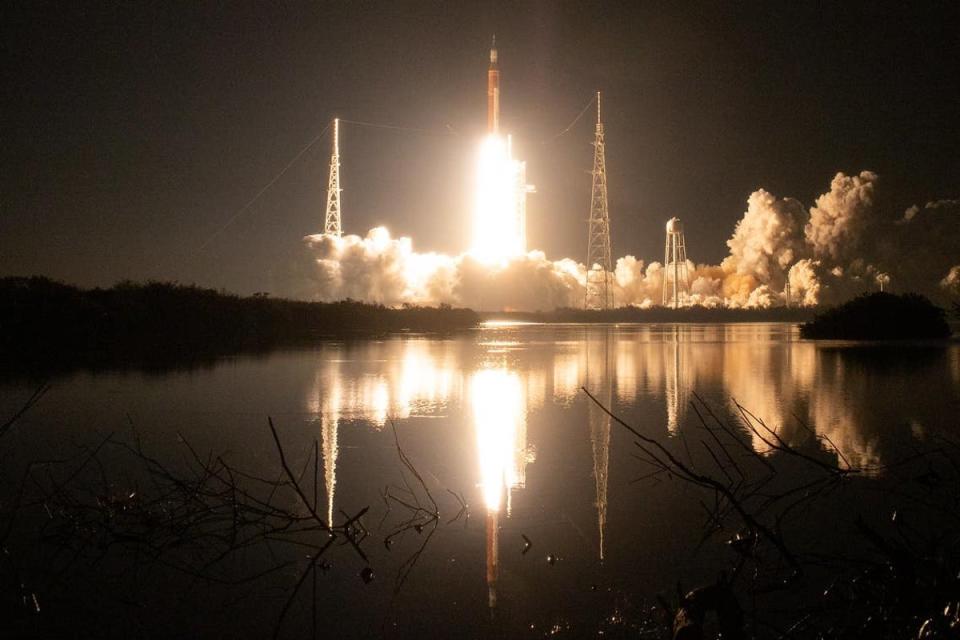NASA’s Orion capsule returns from trip around the moon after completing first mission of Apollo successor
NASA’s Artemis I mission came to a dramatic close on Sunday morning, as an unmanned Orion capsule return from its trip around the moon to reenter Earth’s atmosphere, before a planned splashdown in the Pacific Ocean off the coast of Mexico.
The arrival marked an important step in the Artemis programme, an ambitious initiative to get human astronauts back on the moon by 2024, part of larger effort to foster a continued human presence there and lay the groundwork for the eventual human exploration of Mars.

Orion was launched into space with its crew of test dummies on 16 November in the first test of NASA’s massive new Space Launch System rocket and traveled roughly 239,000 miles to the moon before beginning its return voyage to Earth.
The $4bn flight involved the craft spending about a week orbiting the lunar surface.
In addition to advancing NASA’s successor to the famed Apollo moon-landing programme, the Artemis I tested a host of new technologies and maneuvers, such as a heat shield made of carbon fiber and titanium, which was projected to reach temperatures of 5000 degrees Fahrenheit (2800 Celsius) as the Orion descended back to Earth.

NASA mission planners also used a new “skip” maneuver on the Orion’s approach.
“While it’s not a perfect analogy, Orion will mimic a stone skipping across a pond by dipping into the Earth’s atmosphere, skipping out, then re-entering,” aerospace firm Lockheed Martin, the prime contractor on the project, said in a statement. “Performed by the crew module, this maneuver gives Orion more space to travel before splashing down, allowing it to be more precise with where it lands.”
The Artemis mission struggled at first to get off the ground.
An engine problem, a fuel leak, then Hurricane Ian caused the launch of the Orion capsule to be delayed from late August to November.
This is a developing news story and will be updated with new information.
